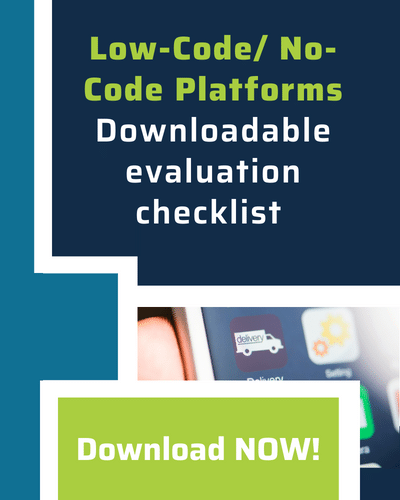Artificial Intelligence (AI) is revolutionizing industries worldwide, and food manufacturing is no exception. From optimizing inventory management to enhancing supply chain efficiency, AI is empowering food manufacturers to improve operations, reduce waste, and stay competitive in a fast-changing market.
However, adopting AI can seem daunting, especially for manufacturers with established workflows and systems. The good news? Implementing AI doesn’t have to disrupt your operations. With the right strategy and tools, food manufacturers can seamlessly integrate AI into their processes and start reaping the benefits.
This blog will guide you through the steps to adopt AI in food manufacturing while ensuring minimal disruption.
Why AI is a Game-Changer for Food Manufacturing
Before diving into the “how,” let’s understand the “why.”
AI addresses some of the most pressing challenges in food manufacturing, such as:
- Perishability Management: Ensuring optimal stock levels and reducing food waste.
- Operational Efficiency: Streamlining processes through automation and predictive analytics.
- Quality Assurance: Enhancing product quality with real-time monitoring and anomaly detection.
- Supply Chain Resilience: Mitigating risks from disruptions with data-driven decisions.
Adopting AI is no longer a luxury—it’s a necessity for food manufacturers aiming to stay ahead of the curve.
Step 1: Identify High-Impact Use Cases
AI adoption begins with identifying areas in your operations where AI can deliver the greatest impact. Start by addressing critical pain points:
- Inventory Optimization: Reduce overstocking and understocking with AI-driven demand forecasts.
- Supply Chain Management: Improve delivery timelines and route efficiency using predictive analytics.
- Workflow Automation: Automate repetitive tasks to free up valuable human resources.
Tip: Start small. Focus on one or two key areas to pilot AI solutions before scaling across your organization.
Step 2: Choose the Right AI Partner
Your choice of AI partner can make or break your adoption journey. A reliable partner will provide tools and expertise to ensure seamless integration into your existing systems.
What to look for in an AI partner:
-
Industry-Specific Expertise: Ensure the partner understands the unique challenges of food manufacturing.
-
Seamless Integration: Look for AI solutions that integrate with your current ERP systems, like SAP ECC or S/4HANA.
-
Scalability: Choose a solution that grows with your business needs.
-
Customizability: AI should adapt to your workflows—not the other way around.
-
Support and Training: Opt for a partner offering ongoing support and training to empower your team.
Example: Pillir’s AI Agents are designed for food manufacturers, integrating directly into SAP workflows with minimal setup time and no dependency on version-specific upgrades.
Step 3: Minimize Disruption with a Phased Approach
The key to adopting AI without disrupting operations is to take a phased approach:
Assess Readiness
- Evaluate your existing infrastructure and identify gaps.
- Ensure your data is clean and accessible for AI integration.
Pilot the Solution
- Start with a small-scale deployment in a controlled environment.
- Monitor results and gather feedback from your team.
Scale Gradually
- Once the pilot demonstrates success, expand the AI solution to other areas of your operations.
- Incorporate feedback to refine the solution for maximum impact.
Step 4: Overcome Common Challenges in AI Adoption
Resistance to Change
- Employees may resist AI adoption due to fears of job displacement or complexity.
To counter this:- Communicate the benefits clearly, emphasizing how AI enhances—not replaces—human roles.
- Provide training to help employees feel confident in using AI tools.
Data Silos
- AI thrives on data, but fragmented or inaccessible data can hinder its success.
- Invest in systems that centralize and standardize your data.
- Collaborate with your AI partner to address integration challenges.
Budget Constraints
- AI adoption doesn’t have to break the bank. Start with solutions offering a quick return on investment, such as Pillir’s pre-built AI Agents. These tools are customizable and deploy rapidly, making them cost-effective for food manufacturers.
Step 5: Measure and Optimize
To ensure long-term success, continually monitor the performance of your AI solutions:
- Track KPIs such as cost savings, waste reduction, and efficiency improvements.
- Use insights from AI tools to refine your operations further.
- Stay updated on new AI capabilities to enhance your systems over time.
Why Pillir’s AI Agents Are Ideal for Food Manufacturing
Pillir’s pre-built AI Agents offer a simple, efficient way for food manufacturers to adopt AI with minimal disruption. Here’s why they stand out:
- Tailored for Food Manufacturing: Agents like the Inventory Health Agent and Logistics Optimizer Agent address industry-specific challenges such as perishability and fluctuating demand.
- Rapid Deployment: Deploy within days without disrupting your existing workflows.
- Seamless SAP Integration: No need for additional platforms or costly upgrades.
- Customizable and Scalable: Adapt to your unique needs and grow alongside your business.
- Offline Capabilities: Ensure uninterrupted operations in disconnected environments.
Take the First Step Toward AI Adoption
Adopting AI in food manufacturing doesn’t have to be overwhelming. With a clear strategy, the right partner, and a phased approach, you can integrate AI into your operations seamlessly and unlock its full potential.
Ready to get started? Contact us today to explore how Pillir’s AI solutions can transform your food-manufacturing processes.




 Back
Back/Logo%20-%20black%20text%20blue%20pillar%20(large)-1.jpg)

